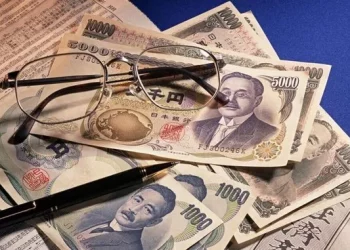In the world of foreign exchange (forex) trading, one of the most fundamental and important aspects is understanding currency exchange rates. Currency exchange rates determine how much one currency is worth in terms of another, and they are a key factor for individuals, businesses, and traders alike. For example, if you’re looking to convert $95 USD (United States Dollar) into British Pounds (GBP), you need to know the current exchange rate between these two currencies.
This article aims to explain the process of converting US dollars to British pounds, provide insights into the factors that influence exchange rates, and discuss how traders and investors can use this knowledge to make informed decisions.
Understanding Currency Exchange Rates
Currency exchange rates are the prices at which one currency can be exchanged for another. These rates fluctuate constantly due to various factors, including supply and demand, economic conditions, and geopolitical events. The forex market, where currencies are traded, is one of the largest and most liquid financial markets in the world.
Exchange rates are typically quoted in two forms: direct and indirect. A direct quote is when the exchange rate shows how much of the domestic currency is needed to purchase one unit of a foreign currency. For example, if the exchange rate between USD and GBP is 0.75, it means that 1 US dollar is equivalent to 0.75 British pounds.
An indirect quote is the opposite: it shows how much of the foreign currency is needed to purchase one unit of the domestic currency. For instance, if the exchange rate is quoted as 1.33 (GBP/USD), it means that 1 British pound is worth 1.33 US dollars.
In this case, we’ll focus on converting $95 USD to GBP, meaning we’ll look at the current exchange rate between the US dollar and the British pound.
How to Convert USD to GBP
To convert $95 USD into British pounds, you need to follow a simple formula. The basic formula for currency conversion is:
Amount in GBP=Amount in USD×Exchange Rate (USD to GBP)
For instance, if the exchange rate between USD and GBP is 0.75, you can convert $95 USD into British pounds as follows:
Amount in GBP=95 USD×0.75=71.25 GBP
Thus, if the exchange rate is 0.75, $95 USD would be equivalent to 71.25 GBP. However, exchange rates fluctuate regularly, so it’s essential to check the current rate before performing the conversion.
Factors Affecting the USD to GBP Exchange Rate
The exchange rate between the US dollar and the British pound is influenced by several factors, many of which are interrelated. Let’s explore some of the most significant factors that determine the value of USD relative to GBP.
1. Interest Rates
Interest rates set by central banks, such as the Federal Reserve in the United States and the Bank of England in the UK, are one of the most influential factors affecting exchange rates. When a central bank raises interest rates, it generally attracts foreign capital because higher interest rates offer better returns on investments. As a result, the demand for the currency tends to increase, causing the currency to appreciate.
If the Federal Reserve raises interest rates, it often leads to a stronger US dollar relative to other currencies, including the British pound. Conversely, if the Bank of England raises interest rates, the British pound may strengthen against the US dollar.
2. Economic Data and Growth
Economic indicators, such as GDP growth, unemployment rates, inflation, and trade balances, play a crucial role in determining the strength of a currency. Strong economic performance in the US generally supports the value of the US dollar, while a robust UK economy strengthens the British pound.
For example, if the US releases stronger-than-expected economic data, such as high GDP growth or low unemployment, the US dollar may appreciate against the pound. On the other hand, if the UK reports strong economic growth, the pound may rise against the US dollar.
3. Political Stability and Events
Political events can also influence exchange rates. Elections, changes in government policy, or geopolitical instability can create uncertainty in the markets, which can cause a currency to fluctuate. Investors prefer stable political environments, so any uncertainty surrounding political events can result in a weaker currency.
For instance, the Brexit referendum in 2016 created significant volatility in the GBP/USD exchange rate. The decision of the United Kingdom to leave the European Union led to a sharp decline in the value of the British pound against the US dollar.
4. Inflation Rates
Inflation plays a key role in determining the purchasing power of a currency. If a country’s inflation rate is high, the value of its currency typically decreases over time because inflation erodes the purchasing power of money. Conversely, low inflation helps maintain a currency’s value.
If the US experiences higher inflation than the UK, the US dollar may depreciate against the pound. Similarly, if inflation is higher in the UK, the British pound could weaken against the US dollar.
5. Market Sentiment
Market sentiment, or the overall mood of investors and traders, can also impact exchange rates. If investors believe that the US economy will outperform the UK economy in the near future, they may buy US dollars and sell British pounds, causing the dollar to strengthen and the pound to weaken.
Conversely, if market sentiment turns negative toward the US dollar due to economic or political concerns, the pound may rise against the dollar.
6. Global Events
Global events, such as natural disasters, wars, or pandemics, can have a significant impact on currency markets. For example, during the COVID-19 pandemic, the global economy experienced significant disruptions, leading to a flight to safety, with investors flocking to the US dollar, traditionally considered a safe haven currency.
Global events can cause significant fluctuations in exchange rates, and traders need to remain vigilant in monitoring such events to anticipate potential market movements.
How Exchange Rates Are Determined
In the forex market, exchange rates are determined by the forces of supply and demand. When more people or institutions want to buy a currency (for example, the US dollar), the demand for that currency increases, causing its value to rise. Conversely, when there is less demand for a currency, its value decreases.
There are two main types of exchange rate systems:
1. Floating Exchange Rates
In a floating exchange rate system, the value of a currency is determined by market forces without direct government intervention. Most major currencies, including the US dollar and the British pound, follow a floating exchange rate system. This means that their value fluctuates based on the supply and demand for each currency in the foreign exchange market.
2. Fixed Exchange Rates
In a fixed exchange rate system, a currency’s value is pegged to another currency or a basket of currencies. For example, the Hong Kong dollar is pegged to the US dollar, meaning the value of the Hong Kong dollar remains within a narrow range relative to the US dollar. Central banks intervene in the market to maintain the fixed exchange rate by buying or selling their currency as needed.
Converting $95 USD to GBP: Real-World Example
Let’s look at a real-world example of converting $95 USD into British pounds. Suppose the current exchange rate between the US dollar and the British pound is 0.80. To convert $95 USD to GBP, you would use the following formula:
Amount in GBP=95 USD×0.80=76 GBP
Therefore, at an exchange rate of 0.80, $95 USD would be equivalent to 76 GBP.
However, it’s important to remember that exchange rates can vary depending on where you are exchanging your currency. Banks, currency exchanges, and online platforms may offer different rates due to transaction fees or service charges.
Currency Conversions and Forex Trading
Forex traders use exchange rate fluctuations to profit from the movement of currency pairs. They buy one currency while simultaneously selling another. For example, if a trader believes that the US dollar will strengthen against the British pound, they might buy USD and sell GBP. Alternatively, if they think the pound will rise against the dollar, they would buy GBP and sell USD.
The forex market is highly liquid, and currencies are traded in pairs, such as EUR/USD (Euro/US Dollar), GBP/USD (British Pound/US Dollar), and USD/JPY (US Dollar/Japanese Yen). Traders use a variety of strategies and tools, including technical analysis, fundamental analysis, and economic indicators, to forecast currency movements and make trading decisions.
Conclusion
The value of $95 USD in pounds depends on the current exchange rate between the US dollar and the British pound. To convert USD to GBP, you need to know the current exchange rate, which fluctuates based on several factors such as interest rates, economic data, inflation, political stability, and market sentiment.
Understanding these factors is crucial for individuals and businesses involved in foreign exchange transactions, as well as for forex traders looking to capitalize on currency fluctuations. By staying informed and monitoring exchange rate trends, you can make more informed decisions when exchanging currency or engaging in forex trading.
As exchange rates are constantly changing, it is essential to check the current rates before converting currencies, and always factor in any fees or charges that may apply when making the conversion. Whether you’re a traveler, investor, or trader, knowledge of how currencies are valued and how exchange rates work is essential to navigating the complex world of foreign exchange.
Related Topics:



























